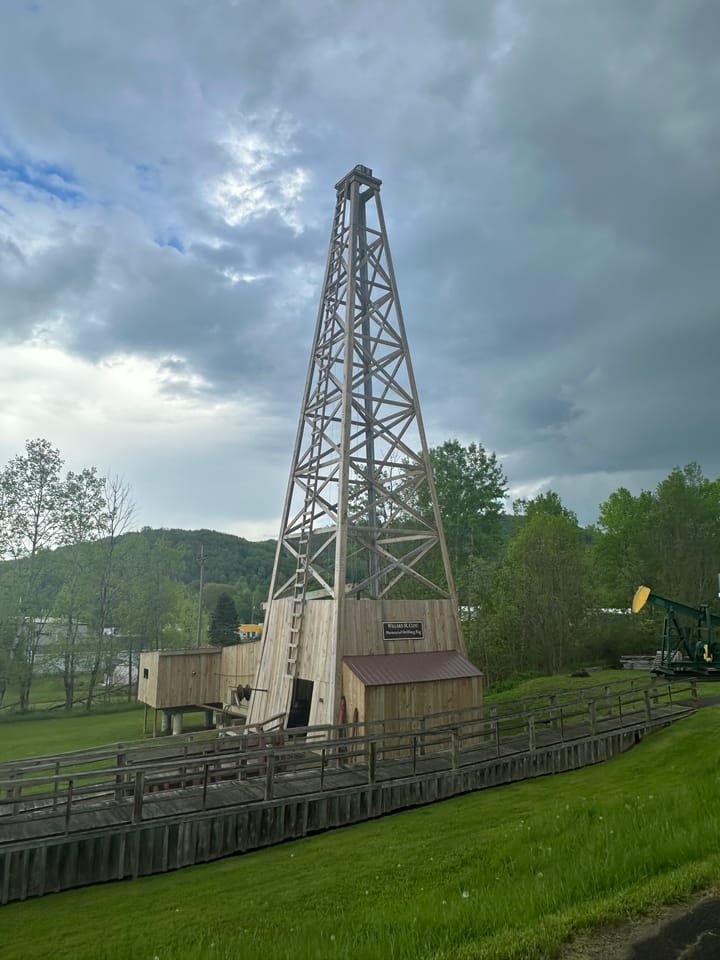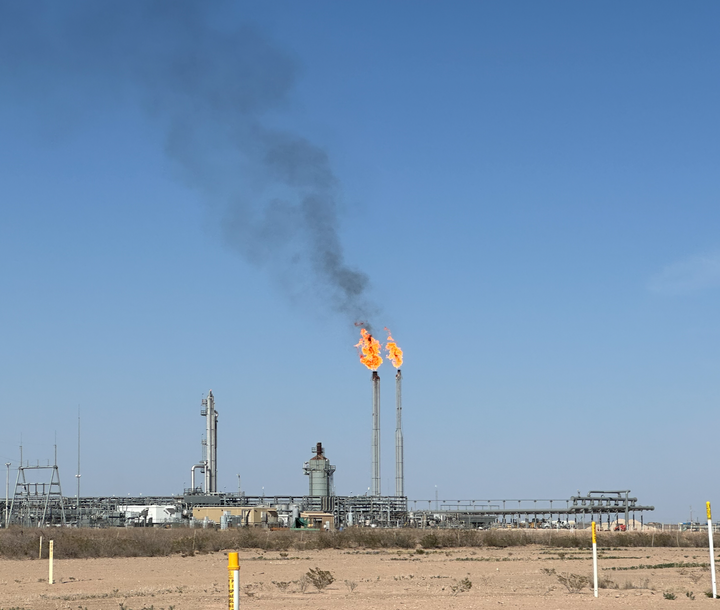The Media is Helping Spread Oil Industry Myths Again
[J]ournalists must also be careful not to believe everything people say. Sometimes, people are mistaken. Sometimes, people lie.’

In November 2022 The Harvard Business Review ran an article that offered advice to those considering a career in journalism, including this bit.
‘[J]ournalists must also be careful not to believe everything people say. Sometimes, people are mistaken. Sometimes, people lie.’
This is a good thing to keep in mind when you read last week’s coverage of the U.S. oil industry in Reuters and the New York Times. Both of these publications published claims about the U.S. oil industry that were not believable if one has a basic understanding of the industry. I don’t know if the authors of the articles did this unwittingly, but I do know that if they had done a few searches on the internet, they would find valid sources that disproved what they had been told and were reporting.
After writing about the U.S. oil industry for the past decade, I feel confident saying that the industry is masterful at deception. And now that the big players in the U.S. industry have spent $125 billion or so on acquiring more shale acreage, a new myth has sprung up and it was quickly adopted by some major media outlets last week.
On February 14th, Reuters ran an interesting article about the new strategy for the oil industry saying that, “Oil majors are targeting new oilfields that can be profitable even if oil prices fall to about $30 per barrel.” Now, if you are an oil major, this makes perfect sense. Low cost production is a proven path to profits and is why Saudi Arabia has the best chance to be the “last man standing” in the global oil game. If it was possible to buy up oil reserves that were profitable at $30 a barrel, it would be a wise financial move. Where this theory goes off the rails is with the $125 billion recently spent on what was mostly for U.S. shale acquisitions (including Exxon's $60 billion investment in the Permian). The Reuters article states, “Exxon, Chevron and Occidental Petroleum recently struck deals worth a combined $125 billion to acquire companies that will help them pump oil for between $25 and $30 per barrel.”
Except, as I’ll explain, they didn’t. I would link to the source for this "profitable at $30" claim by Reuters but there is none. Where did this analysis and conclusion originate? We are not told. Perhaps this reporter knows something we don’t but as my engineering professors used to say, “No credit if you don’t show your work.”
A Refresher on “Corporate Math”
In my 2020 article, “Is the U.S. Fracking Boom Based on Fraud?” I wrote about how shale oil companies were blatantly lying about their “breakeven” costs.
Bethany McLean was the first reporter to question whether Enron was a financially sound company in a 2001 article for Fortune magazine. McLean went on to co-author the book The Smartest Guys in the Room, which documented the fall of Enron due to its fraudulent practices.
In 2018, McLean also published the book Saudi America, which highlighted many of the financial challenges the fracking industry has faced. In a recent interview for Texas Monthly’s podcast Boomtown, McLean explained one of the very accepted and blatantly misleading practices of the fracking industry:
“I’d raise a couple of points. One is that companies have long hyped these break-even numbers. They say we can break even at $25 a barrel, we can break even at $20 a barrel. And then you look at their consolidated financial statements and they are losing money. And so something is going wrong … the people called it to me [sic] … corporate math or investor economics. So they were trying to put together these investor pitch decks that would show investors a set of economics that weren’t real. So they would show you that they could break even on a well at $25 barrel of oil but then yet you’d go to the corporate financial statements and they were losing money.”
Oddly enough, this blatant financial fraud is just accepted in the shale industry and the Securities and Exchange Commission allows it to continue. It wasn’t too long ago that Exxon’s CEO Darren Woods said that they could produce oil in the Permian for $15 a barrel. He doesn’t say that anymore.
The Real Numbers
If we were to look at what it costs to produce shale oil in the U.S., it isn’t hard to find reputable sources that don’t agree with the unsourced Reuters claim.
In October, S&P Global Insights had this to say:
“Pioneer currently has roughly 5,706 wells in the Midland Basin, with the bulk of those high quality, with breakevens ranging from $60.15/b to $71.71/b. ExxonMobil has roughly 1,907 wells in the Midland. The bulk of those have breakevens ranging from $67.84/b to $84.05/b.”
In September 2023, Hart Energy wrote:
“Rampant cost inflation and declining well productivity across the U.S. shale patch are making drilling wells much more expensive.”
Hart also reported that, Dane Gregoris, managing director at Enverus Intelligence Research, predicted costs were going up:
“We’ve just sort of reached a point of maturity in U.S. shale. Wells aren’t getting better incrementally. In fact, they’re probably getting worse. Therefore, the cost of supply is going to be increasing—outside of service costs”
The conclusion of the Enervus report was “oil prices will need to be in the range of $70/bbl to $90/bbl WTI in order to maintain North American activity levels and supply growth.”
One thing pretty much everyone agrees on is that the Permian has the best remaining oil producing acreage in the U.S., even with those lofty breakeven prices. But Chevron just bought a chunk of the Bakken with its acquisition of Hess. Will this get them to $30 a barrel production costs? Not according to Harold Hamm, head of Continental Resources, the oil company that has consistently been producing the most oil in the Bakken. In November he noted that there has been a fundamental shift in the U.S. shale industry due to the lack of remaining Tier 1 acreage and “to maintain industry profitability amid elevated inflation, oil will have to trade at $75 to $85 per barrel.” In that same article it noted that, “According to Bloomberg’s calculations, oil drillers need crude prices of $86 or more to make their costliest wells profitable, up 50% since March 2022.”
Longtime industry analyst Art Berman wrote this in January about the Bakken.
“Present-value prices of $73 to $90 for the last two years are troubling especially compared to break-evens in the $40- to $50-range as recently as 2021.”
Notice how the breakevens are going in the wrong direction if you are trying to get to $30 a barrel.
And then from prominent oil industry analysts Wood MacKenzie.:
“Oilfields in the US Lower 48 states have a very wide range of breakeven prices, and the lowest-cost ones are competitive with just about any other production in the world. But by the 2030s, their average breakevens are expected to be towards the top end of the global cost curve”
Again we see the experts saying that U.S. shale oil is only going to get more expensive to produce and will be at the top of the global cost curve in the next decade. However, despite the hard facts from many industry experts showing that the reality of oil production economics in the U.S. shale patch are very different from what is portrayed in the Reuters article, the article was successful.
A mere two days later, in an article on the potential to ban oil and gas production, New York Times op-ed writer Peter Coy wrote that.
“Major oil companies aren’t starting projects unless they can make money with oil at $30 a barrel, Reuters reported this week.”
Does the New York Times use fact checkers anymore?
The myth making machinery is working well. Whether those writing these myths are aware that they are spreading industry-friendly propaganda doesn’t really matter. The industry knows and they are spreading the message they need everyone to believe.
Instead of believing the lie the U.S. shale industry is setting itself up to be profitable at $30 a barrel, we should be asking what the real plan is. Why is this industry spending so much money to acquire new shale acreage that is clearly a risky bet at today’s oil prices? Last month the Financial Times ran a piece titled, “The days of $100 oil prices are over,” that made the case that high oil prices that have driven recent profits for the oil majors are a thing of the past.
If we ignore the myths being used to explain their behavior and instead ask why companies would make what seem like high risk investments, we may get different answers.
My answer is that the oil companies need everyone to believe that they have huge reserves of profitable oil. This helps support the idea that they will be good to pick up the check for the half trillion or more it will take to clean up the mess they’ve left behind, while they give that half trillion to investors in the form of dividends and stock buybacks in the next decade. And that will be right about the time that things get a lot harder for them financially because, "their average breakevens are expected to be towards the top end of the global cost curve.” Could they be planning to dine and dash? What if they plan to do what extractive industries have always done: Privatize the profits, socialize the losses.
The question we need to be asking is, "Should we wait until the oil industry takes all of its profits to ask for the money to pay for the clean up?"



Comments ()